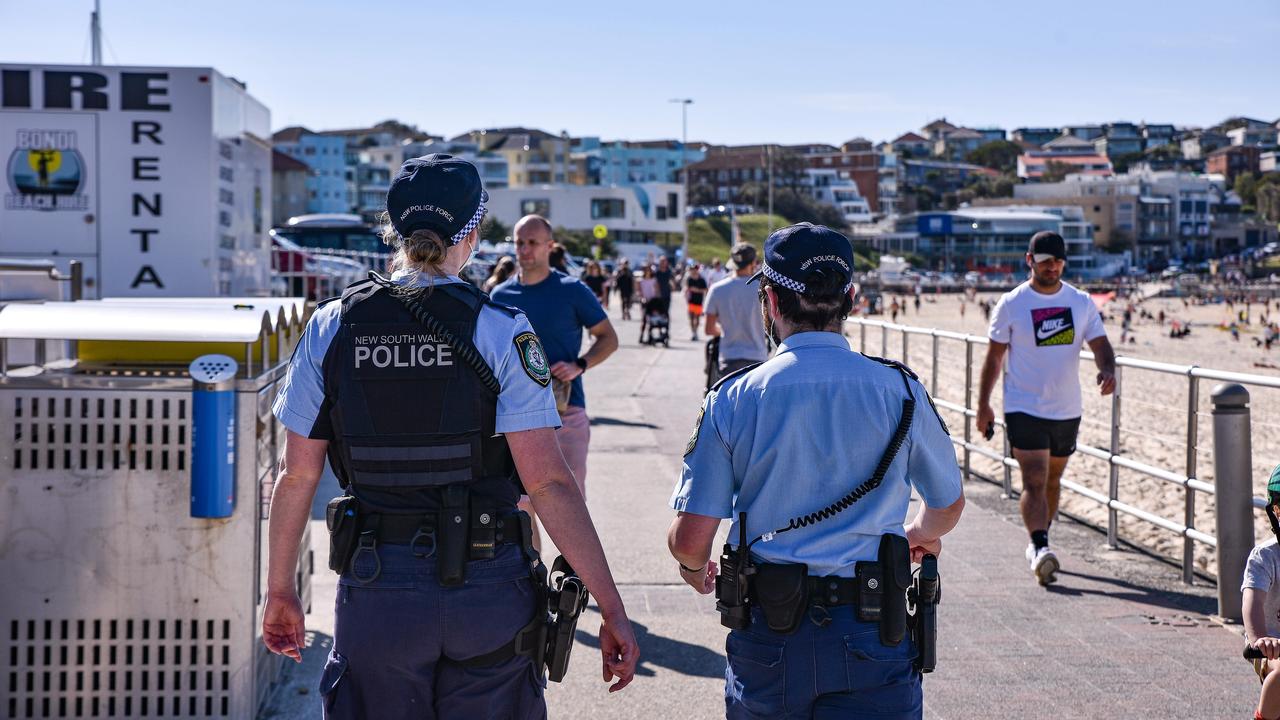Navy errors blamed for fire on SIEV 36
CORONER hears of litany of mistakes that led to asylum boat SIEV 36's sabotage at sea.
DESPERATE asylum-seekers intercepted at sea by the navy were allowed to keep cigarette lighters and matches, even though one man was seen to make a "throat-slashing gesture" in the chaos before their boat exploded, killing five and injuring many more.
Northern Territory Coroner Greg Cavanagh was told yesterday, at the opening of an inquest into the tragedy off Ashmore Island last April, that "a level of confusion . . . and lack of control" allowed the boat to be sabotaged and set ablaze by either its Indonesian crew or the 47 predominantly Afghan asylum-seekers packed on board.
A navy requirement for its own personnel to be rescued ahead of the boat people may have contributed to the death toll, the coroner heard.
In one case, a distressed asylum-seeker was pushed away from a rescue launch to allow RAAF Corporal Sharon Jager to instead be dragged to safety.
Another man was seen to be struggling in the water and then drown. Leading seaman Matthew Keogh tried to help, but the navy's policy to help its own before anyone else prevented him from diving in, the court heard.
The deadly explosion and its aftermath were captured on video by the navy, and played to the inquest yesterday. It moved Mr Cavanagh to comment that it was "amazing more people had not been killed".
Counsel assisting the coroner, Stephen Walsh QC, said a Northern Territory police investigation had catalogued a series of blunders after the boat, known as SIEV 36, was stopped by navy patrol boats in northern Australian territorial waters.
The initial naval boarding party had failed to confiscate lighters and matches, access to the boat's engine compartments and fuel had not been continually supervised and the search of the vessel was insufficient, missing the supply of petrol later used to torch it.
Mr Walsh said deaths may have been avoided had life jackets been distributed or made more readily accessible, and had the asylum-seekers been instructed how to use them.
A "less rigid policy of recovery" of naval personnel first might also have averted loss of life.
Mr Walsh detailed how the "failings in procedures and action taken before the explosion and immediately following it" were compounded by the apparent confusion of the commanding officers of the patrol boats, HMAS Albany and HMAS Childers, about government policy on the detention of boatpeople.
When SIEV 36 was initially boarded by a party from the Albany, "no final decision" had been made about how those on board were to be handled, Mr Walsh said in his opening address.
Previously, Australian policy had been for the navy to escort seaworthy boats into inter-national waters and instruct them to return to Indonesia. But the day before the SIEV 36 was intercepted north of Ashmore Island, the government had announced a change in policy to escort all detained vessels to Christmas Island. This, however, was not communicated to those on board the seized boat, possibly because the naval commanders themselves were not aware of the new rules.
The navy captains at the scene also seemed to be unaware of an incident two weeks earlier in which the master of another intercepted boat, SIEV 34, had poured fuel on the engine with the professed intention of setting it ablaze with a cigarette lighter.
"It is therefore anticipated that the evidence will disclose that a motive for disabling SIEV 36 clearly existed," Mr Walsh said.
"The passengers wanted to remain in Australia.
"The crew may have been directed to scuttle the vessel rather than allow it and the passengers to be returned . . . accordingly, if the passengers and crew mistakenly believed that they were to be forced back to Indonesia, unidentified persons on the vessel may have decided to sabotage the engine and set fire to the vessel to prevent their return."
Mr Walsh said the original boarding party from the Albany, which arrived on the SIEV 36 at 9.49am on April 15 last year, did not appear to have conducted a thorough search of the below deck and between the engine room and the bow. Nor did the detachment confiscate lighters and matches from the boat's crew or passengers, who had paid people-smugglers between $US6000 ($6655) and $US15,000 for passage to Australia.
Next morning, April 16, a party from the Childers took over.
Some of the asylum-seekers saw a photocopied notice from the navy advising that the boat would be returned to Indonesia. Mr Walsh said people began "remonstrating" with the naval personnel, saying: "No Indonesia, no Indonesia."
Mr Walsh told the inquiry: "Some were making cut-throat gestures."
At about 7.25am, a member of the boarding party reported a smell of fuel and became alarmed by the behaviour of the passengers. He noticed some of them had lighters and were smoking.
Within minutes, the naval team realised the vessel's engine had been sabotaged and fuel poured into the bilge. A "high threat" situation was reported to the Childers, where the captain was able to smell the stench of petrol emanating from the refugee boat.
A man, Arman Ali Brahimi, was spotted squatting in the bow, with a lighter in his hands. Planking had been removed from the deck to gain access to an area below where unleaded fuel was said to be stored. "A scuffle occurred between the (navy) members and Brahimi, and the lighter was recovered," Mr Walsh said.
More planks were then removed from a crowded area near the wheelhouse of the boat. "There is at least a reasonable suspicion that these planks were moved in order to create a new access point for ignition by match or cigarette lighter of petrol poured below the deck in the bilge," Mr Walsh said.
The explosion occurred at 7.45am. Most of those on board were either blown off the boat or forced to jump into the sea to escape the flames that engulfed it. Two inflatable boats from the Childers and Albany were launched, but navy procedure required that their own personnel be rescued before that of the boatpeople could begin.
Mr Walsh said rescue and recovery of all in the water was completed within 12 minutes, but this was too late for the five victims.
Autopsies on the three bodies recovered found the cause of death to be drowning, although two victims had also suffered burns. The bodies of the two other victims had not been recovered.
The inquest continues.



